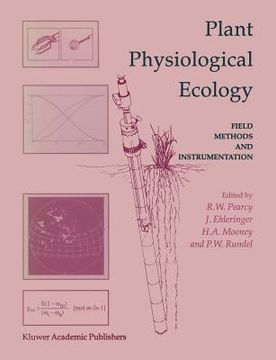Share
plant physiological ecology: field methods and instrumentation (in English)
Robert W. Pearcy
(Illustrated by)
·
J. R. Ehleringer
(Illustrated by)
·
Harold Mooney
(Illustrated by)
·
Springer
· Paperback
plant physiological ecology: field methods and instrumentation (in English) - Pearcy, Robert W. ; Ehleringer, J. R. ; Mooney, Harold
$ 104.20
$ 109.99
You save: $ 5.79
Choose the list to add your product or create one New List
✓ Product added successfully to the Wishlist.
Go to My WishlistsIt will be shipped from our warehouse between
Monday, July 08 and
Tuesday, July 09.
You will receive it anywhere in United States between 1 and 3 business days after shipment.
Synopsis "plant physiological ecology: field methods and instrumentation (in English)"
capable of providing at least a relative measure of stomatal aperture were first used shortly thereafter (Darwin and Pertz, 1911). The Carnegie Institution of Washington's Desert Research Laboratory in Tucson from 1905 to 1927 was the first effort by plant physiologists and ecologists to conduct team research on the water relations of desert plants. Measurements by Stocker in the North African deserts and Indonesia (Stocker, 1928, 1935) and by Lundegardh (1922) in forest understories were pioneering attempts to understand the environmental controls on photosynthesis in the field. While these early physiological ecologists were keen observers and often posed hypotheses still relevant today they were strongly limited by the methods and technologies available to them. Their measurements provided only rough approximations of the actual plant responses. The available laboratory equip- ment was either unsuited or much more difficult to operate under field than laboratory conditions. Laboratory physiologists distrusted the results and ecologists were largely not persuaded of its relevance. Consequently, it was not until the 1950s and 1960s that physiological ecology began its current resurgence. While the reasons for this are complicated, the development and application of more sophisticated instruments such as the infrared gas analyzer played a major role. In addition, the development of micrometeorology led to new methods of characterizing the plant environments.
- 0% (0)
- 0% (0)
- 0% (0)
- 0% (0)
- 0% (0)
All books in our catalog are Original.
The book is written in English.
The binding of this edition is Paperback.
✓ Producto agregado correctamente al carro, Ir a Pagar.

